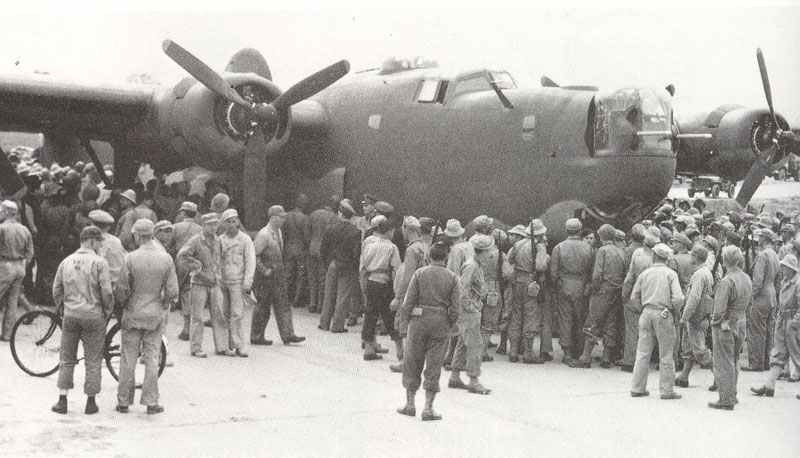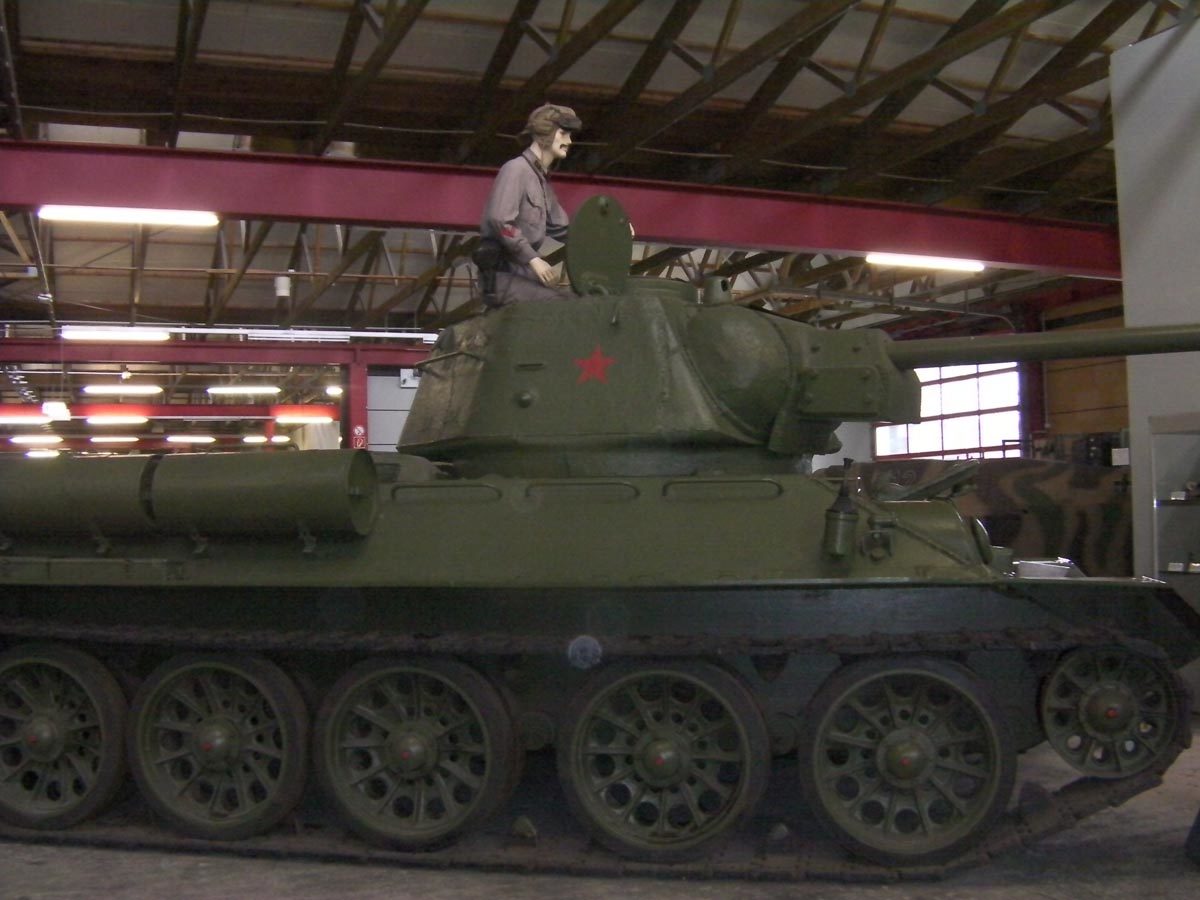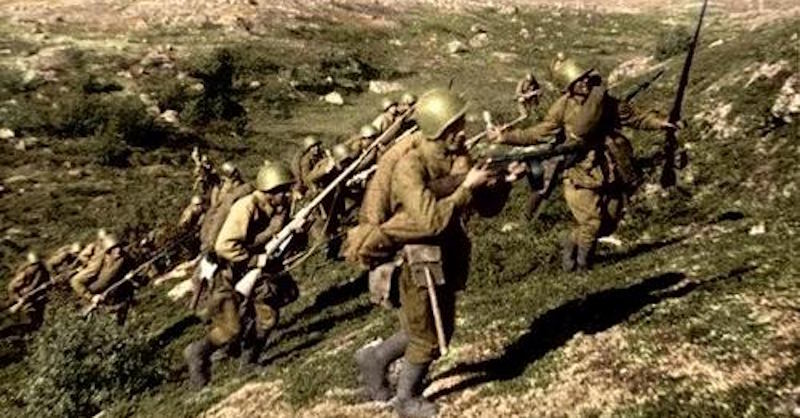Strength and Organization of the USAAF in North America, Great Britain and Mediterranean theater in 1942.

In the 1930s there were dramatic strides in civil and commercial aviation, and by the eve of the war the United States was the world leader in civil aviation. Army aviation lagged sadly behind. Its aircraft were not capable of meeting the demands of the war to come, and production was quite limited in comparison with the industry’s potential.
US Army Air Force
In 1938 only 1,800 military aircraft were built, and 2,195 in the following year. But in 1939, when the 1935 Neutrality Act was repealed, the American aircraft industry began to recover. (The Act had put an embargo on the export of all military material to belligerent countries, with the aim of keeping America out of war.) France and Britain were major new customers for American aircraft, and the 1941 Lend-Lease Act gave this production a new boost.
In 1939 the USAAC had a total of 2,400 aircraft, while the U.S. Navy Air Force had 2,500 aircraft, 600 of which were carrier-based.
When war broke out, the Army had 3,305 aircraft in a state of readiness, while the Navy had about 3,000 aircraft ready.
In June 1941 the United States Army Air Corps became the Army Air Force and was commanded by Major-General Henry H. Arnold. At that time its strength was only a small force of 9,078 officers and 143,563 enlisted men. Within six months its strength had risen to 22,524 officers (including cadets) and 274,579 men. The numbers of aircraft had risen from 6,102 to 10,329 in the same period.
Eight Air Forces were constituted. Four were based within the continental United States and one each was based in the Philippines, Hawaii, Alaska and the Caribbean. Between 1943-44 the AAF doubled in size and reached a peak strength in March 1944 of 2,411,294 men, of which 38 per cent served overseas. By April 1945 52 per cent of its personnel served overseas. Supplying this sizable force was a considerable constraint on the number of infantry divisions the US could ship abroad.
Formed on 28 January 1942, the United States 8th Army Air Force was established at Savannah, Georgia, as the air component of the projected invasion of North-West Africa (Operation Torch). With the escalation of war in the Pacific, this was cancelled and, re-numbered from its original title of the 5th AF, the 8th was diverted to Britain; an advance party landed in February under the command of Brigadier General Ira Eaker.
Initial plans called for a total of 60 combat groups – 33 of bombers, 12 of fighters and 15 of transport and observation aircraft, with a proposed strength of 3,500 machines.
April and May 1942 saw the first personnel arrive on British soil. The first raid of major proportions was mounted on 17 August 1942 by 12 Boeing B-17 Fortresses, the giant four-engined bombers which, with the Consolidated B-24 Liberator, bore the brunt of the US bombing effort. This raid on Rouen, mounted in daylight, sustained no losses, but this was not to be the case in the majority of its successors.
The USAAF in the Mediterranean consisted at the beginning of the 12th Air Force, which contained fighter and bomber units. The 12th Air Force was established on 20 August 1942 and was soon engaged in active operations in the support of the ground fighting in North Africa. It’s initial strength was some 500 planes, a figure that was doubled by early 1943 when it was combined with RAF units to form the Northwest African Air Force under General Carl Spatz.
The organization structure of the AAF in each theater of operations differed with the climatic, geographical conditions and tactical requirements pertaining there. The smallest administrative unit was the group of two to four squadrons.
Bomber and reconnaissance squadron: 13 aircraft;
Fighter and fighter-bomber squadron: 28 aircraft;
Navy squadron: 6 to 18 aircraft (depending on type);
If a group was stationed at a permanent base, the various squadrons usually pooled their administrative services; but wherever the squadrons were stationed the group trained together. The air group was the Air Force equivalent of the Army regiment.
The various groups were differentiated by the type of aircraft they flew. For example, a very heavy bombardment group, flying B-29 Superfortress would comprise 462 officers and 1616 men. But the number of men and aircraft in each group varied.
Above this was the wing of two groups, which was a nonadministrative unit and only concerned with tactical plans and operations.
Two or more wings were typically brigaded together with auxiliary units to form a command – an organization of one kind of air strength, fighters or bombers. If these forces were too large for one man to control, then they would be split into air divisions, which rested between wing and command levels. The air force was the largest single unit in the AAF and consisted of three or more commands. If, however, the tactical demands of a theater required a particular type of air support than an air force would be created within a theater air force.
References and literature
Luftkrieg (Piekalkiewicz)
The Armed Forces of World War II (Andrew Mollo)
World War II – A Statistical Survey (John Ellis)
World Aircraft World War II (Enzo Angelucci, Paolo Matricardi)








